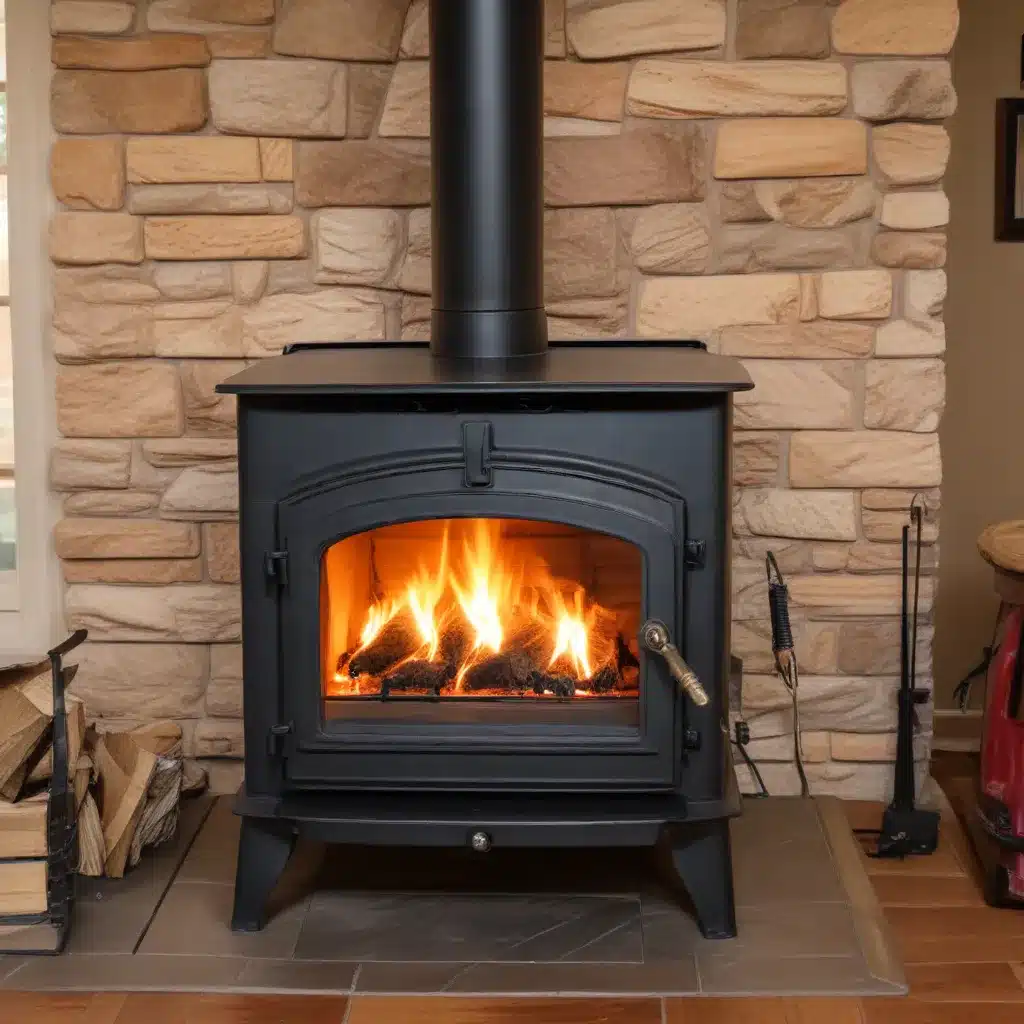
The Importance of Clean Indoor Air
When it comes to home heating, wood stoves have long been a popular choice for their efficiency, cost-effectiveness, and cozy ambiance. However, the use of wood-burning appliances has also raised concerns about indoor air quality. Improper operation, outdated technology, or poor maintenance can lead to the release of harmful pollutants that compromise the health and comfort of a home’s occupants.
As an experienced expert in the field of wood stove heating, I’ve seen firsthand the importance of prioritizing indoor air quality when using these heating solutions. The good news is that with the right knowledge and strategies, you can enjoy the benefits of wood stove heating while significantly improving the quality of the air in your home.
Understanding Combustion Pollutants
The primary pollutants of concern when operating a wood stove are those produced by the combustion process. These include:
- Carbon monoxide (CO): A colorless, odorless gas that can be fatal in high concentrations. Exposure to CO can cause nausea, dizziness, and even unconsciousness.
- Nitrogen dioxide (NO2): A reddish-brown, irritating gas that can damage the respiratory system and increase the risk of respiratory infections.
- Particulate matter (PM): Small airborne particles, including soot and ash, that can penetrate deep into the lungs and aggravate respiratory conditions like asthma.
- Organic compounds: A complex mixture of gases and particles, including formaldehyde and benzene, which can have both short-term and long-term health effects.
These pollutants can be released into the indoor air through improper venting, malfunctioning equipment, or even routine maintenance activities like ash removal.
Strategies for Improving Indoor Air Quality
To ensure that your wood stove heating system is not compromising the air quality in your home, consider the following strategies:
1. Invest in a High-Efficiency Wood Stove
Newer, EPA-certified wood stoves are designed to burn wood more cleanly and efficiently, reducing the amount of pollutants released into the indoor air. Look for models with advanced combustion technology, such as:
- Catalytic converters: These devices help to further reduce particulate matter and other emissions by burning off unburned hydrocarbons.
- Secondary combustion chambers: These chambers allow for a more complete and cleaner burn, minimizing the release of harmful pollutants.
When selecting a new wood stove, prioritize models with high efficiency ratings and low emission levels. This upfront investment can pay dividends in terms of improved indoor air quality and reduced health risks.
2. Ensure Proper Ventilation and Maintenance
Even the most efficient wood stove requires proper ventilation and regular maintenance to function safely and efficiently. Make sure your wood stove’s flue or chimney is in good condition, free of blockages, and adequately venting combustion gases outside your home.
Additionally, be diligent about cleaning and maintaining your wood stove, including:
- Regularly cleaning the firebox and removing ash buildup
- Inspecting and replacing gaskets and seals as needed
- Properly adjusting the air intake and other controls to optimize the burn
Proper ventilation and regular maintenance can help prevent the backflow of combustion gases into your living space, minimizing your exposure to harmful pollutants.
3. Optimize Airflow and Ventilation
Even with a high-efficiency wood stove, it’s important to ensure adequate airflow and ventilation in your home to dilute and remove any pollutants that may be present. Consider the following measures:
- Open windows or use exhaust fans when operating your wood stove, particularly during start-up and refueling, to increase air exchange rates.
- Ensure that your home’s HVAC system is properly balanced, with sufficient make-up air to offset the air being drawn out by the wood stove.
- Use a high-efficiency particulate air (HEPA) filter in your home’s air handling system to capture fine particulates.
- Consider installing a heat recovery ventilator (HRV) or energy recovery ventilator (ERV) to bring in fresh outdoor air while recovering heat from the exhaust.
By optimizing airflow and ventilation, you can help dilute and remove any pollutants generated by your wood stove, maintaining a healthier indoor environment.
4. Monitor Indoor Air Quality
To truly understand the impact of your wood stove on indoor air quality, consider investing in an air quality monitoring device. These devices can measure the levels of various pollutants, including particulate matter, carbon monoxide, and volatile organic compounds (VOCs), providing you with valuable data to inform your actions.
If your monitoring reveals elevated levels of pollutants, you can take targeted steps to address the issue, such as adjusting your wood stove’s operation, improving ventilation, or upgrading to a more efficient model.
5. Adopt Proper Fuel and Burning Practices
The type and quality of the wood you burn can also have a significant impact on the amount of pollutants released into your home. Opt for well-seasoned, dry hardwood that has been properly stored and cured. Avoid burning wet or green wood, as well as treated or painted wood, which can release a host of harmful chemicals.
Additionally, focus on maintaining the optimal burning conditions in your wood stove, such as:
- Starting with a hot, well-established fire before adding new fuel
- Adjusting the air intake to ensure complete combustion
- Avoiding smoldering fires, which can produce excessive smoke and particulates
By adopting proper fuel and burning practices, you can minimize the release of pollutants and maintain a cleaner, healthier indoor environment.
Prioritizing Health and Comfort
Heating your home with a wood stove can be a cost-effective and environmentally friendly choice, but it’s essential to prioritize indoor air quality to protect the health and comfort of you and your family. By investing in high-efficiency wood stove technology, ensuring proper ventilation and maintenance, optimizing airflow, monitoring indoor air quality, and adopting best practices for fuel and burning, you can enjoy the benefits of wood stove heating while breathing easy.
For more information and resources on improving indoor air quality with wood stove heating, be sure to visit https://woodstoveheaters.com/. Our team of experts is dedicated to providing homeowners with the knowledge and tools they need to create a healthy, comfortable living environment.


